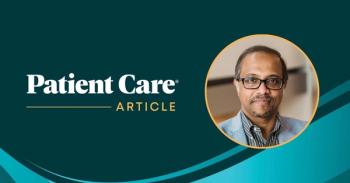
The Hidden HIV Epidemic in the United States
One US location has a higher incidence of HIV than “any country in sub-Saharan Africa.” What does this tell us about the inadequacies in our HIV prevention efforts?
Which city in the United States had the highest HIV incidence (number of new cases per population) in late 2014–early 2015? Atlanta? Detroit? New York City? San Francisco?
The answer: Austin, Indiana.
In about a 6-month period, 153 confirmed new cases of HIV infection occurred in this rural community of 4200 persons. All of the cases were injection drug use (IDU)-related. In fact, the 153 cases were more than the number of IDU-related cases in New York City in all of 2014. According to CDC Director Tom Frieden, Austin, Indiana, has a higher incidence of HIV than “any country in sub-Saharan Africa.”
The story was widely reported in both the lay press and medical journals earlier this year.1-3 So why am I bringing it up now? Because it has happened again (albeit with smaller numbers in a different location) and for what these episodes can tell us about the inadequacies in our HIV prevention efforts.
First, a few relevant facts about the Indiana outbreak:
(1) The Indiana State Department of Health began an investigation on 23 January 2015, after being notified that there were 11 confirmed new HIV infections from the county that includes Austin. Historically, and as reported in the MMWR2, fewer than 5 cases had occurred in that county annually.
(2) The age range of the first 135 cases was 18 to 57 years; 55% were males; 7% were commercial sex workers; more than 80% were found to be coinfected with HCV.
(3) Multigenerational needle sharing (as many as 3 generations within the same household) contributed substantially to the epidemic.
(4) The number of reported daily injections ranged from 4 to 15, with 1 to 6 needle sharing partners per injection event.2
Less well known, but critical going forward, is what circumstances contributed to the Indiana outbreak. The county that includes Austin, Indiana, consistently ranks lowest in the state for “health indicators” and life expectancy.2 The county has an unemployment rate approaching 10%; 20% of the county’s residents did not finish high school; 20% live in poverty; there was only 1 health care provider for the entire community.2 In other words, economic adversity and lack of access to care were 2 very important contributing factors to the outbreak.
Many of us who live in urban or suburban areas are completely unaware of the extent of the poverty and lack of medical care that exist in much of the rural United States. Where there is greater awareness of the challenges rural Americans face in obtaining medical care, as in some states, such as Alabama, that have been at the forefront of providing infrastructure support for telemedicine efforts. For instance, the very HIV-experienced clinic staff in Montgomery, Alabama, provide outstanding HIV-specific and even general medicine care to several remote locations via telemedicine.
As a result of the Indiana outbreak, Governor Mike Pence declared a state of emergency that allowed him to temporarily suspend the very restrictive laws in Indiana pertaining to the use of needles for nonmedical purposes. Indiana is 1 of 25 states where purchasing needles without a prescription is illegal.3 In fact, using needles for nonmedical purposes in Indiana was a felony, punishable by up to 3 years in prison.
The HIV Medicine Association, of which I am a member, has long opposed such laws. Unfortunately, there are many similar laws in other states that have been shown to do nothing to stop the spread of HIV and, in fact, may actually contribute to the ongoing US HIV epidemic (eg, lack of needle exchange programs). As of 2011, 33 states had enacted a total of 67 laws requiring disclosure of HIV status to sexual partners and needle-sharing partners or criminalizing behaviors that pose almost zero risk for HIV transmission.4
One additional factor contributed substantially to the Indiana and other similar HIV outbreaks: the widespread availability of opioid pain relievers. Health care providers need to re-evaluate their prescribing practices of these frequently abused products and become more adept at recognizing the signs of opioid use disorders and drug seeking behavior (“doctor shopping”). In addition, those of us in the health care professions need to be aware that IDU is a widespread phenomenon that is not limited to the inner cities.
Finally, states need to invest more in public health infrastructure, including making available additional funds for contact tracing and other preventive efforts and services.
References:
1. Ungar L, Kenning C. Indiana community’s HIV outbreak a warning to rural America. USA Today. 17 May 2015.
2. Conrad C, Bradley HM, Broz D, et al. Community outbreak of HIV infection linked to injection drug use of oxymorphone-Indiana, 2015. MMWR Morb Mortal Wkly Rep. 2015;64:443-444.
3. Strathdee S, Beyrer C. Threading the needle-how to stop the HIV outbreak in rural Indiana. N Engl J Med. 2015;373:397-399.
4. Lehman JS, Carr MH, Nichol AJ, et al, for the Centers for Disease Control and Prevention (CDC). Prevalence and public health implications of state laws that criminalize potential HIV exposure in the United States. Aids & Behavior. Published online March 15, 2014.
Newsletter
Enhance your clinical practice with the Patient Care newsletter, offering the latest evidence-based guidelines, diagnostic insights, and treatment strategies for primary care physicians.



















































































































































































































































































